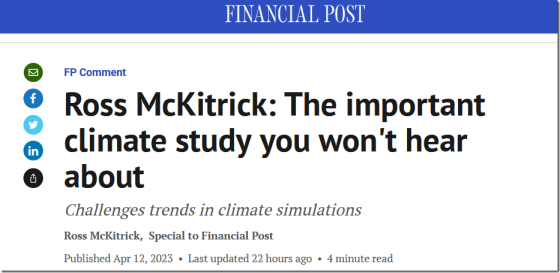by NetZeroWatch, Apr 22, 2023
From predicting ecological collapse and the end of civilization to warnings that the world is running out of oil, all environmental doomsday predictions of the first Earth Day in 1970 have turned out to be flat out wrong.
More than three decades before Greta Thunberg was born — the Swedish environmental activist on climate change — more than 20 million Americans participated in the first Earth Day on April 22, 1970.
We now look back at quotes from Earth Day, Then and Now,” by Ronald Bailey of the spectacularly wrong apocalyptic predictions from Earth Day 1970.
Considering the current doomsday predictions scaremonger activists are verbalizing about global warming that will result in the demise of civilization within the next decade, many of those unscientific 1970 predictions are being reincarnated on today’s social and news media outlets.
Many of the same are being regurgitated today, but the best prediction from the first earth day five decades ago, yes 50 years ago, was that the “the pending ice age as earth had been cooling since 1950 and that the temperature would be 11 degrees cooler by the year 2000”.
The 1970’s were a lousy decade. Embarrassing movies and dreadful music reflected the national doomsday mood following an unpopular war, endless political scandals, and a faltering economy.
The first Earth Day was celebrated in 1970 — okay, “celebrated” doesn’t capture the funereal tone of the event. The events (organized in part by then hippie and now convicted murderer Ira Einhorn) predicted death, destruction and disease unless we did exactly as progressives commanded.data.
…




